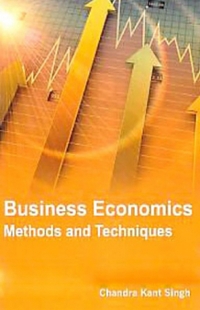Question 1 Kambele is a timber trader. He sources most of his timber from the Democratic Republic of Congo (DRC). He has been in this business for the last 20 years. Kambele deals in buying and selling of logs of different tree species including: teak, mahogany, afzelia, among others. Kambele ferries the logs from the BBC to Uganda where he either splits them or tranships them directly for further shipping to the different countries. Some of these countries include: Kenya, India, Indonesia, China,Vietnamamong others. Due to environment degradation. the government of Uganda enacted the National Forestry and Tree Planting Act, 2003 to regulate the logging and exportation of timber. In the same way, the regional customs body through the East African Community Customs Management Act. 2004 and as amended; classified timber as a restricted item. Convention on International Trade in Endangered Species of Wild Fauna and Flora (CiTES), although unknown to the timber traders, was signed to protect endangered plant and animal species from illegal trade. A number of traders cannot distinguish between restricted items and prohibited items as classified by Customs. 0f recent. Customs and National Forest Authority (NFA) have stepped up efforts to stamp out illegal logging and export of logs and timber. All timber being exported from Uganda or transiting through. undergo a rigorous verification and a number of issues have been raised leaving traders and their agents uncomfortable. Among the issues raised by Customs and NFA include: 1. timber logs are declared as being in transit through Uganda territory but on reaching Uganda during transhipment these logs are split into timber of different dimensions hence turning into a Ugandan product. 2. logs which are modified into 'boxes' can no longer be verified and classified as logs but rather as timber. 3. misdeclaration is punishable according to the law irrespective of whether it is an export or transit through. As a result of this crackdown, a number of concealment of prohibited items like ivory and other prohibited items have been discovered and the offenders paraded before courts of law; sentenced to imprisonment and/or fined and the prohibited items condemned to destruction. This has ignited a discussion among the population wondering why Customs should be concerned about the destruction of environment instead of concentrating on revenue collection. Question 3 (a) As a way of facilitating trade. Customs secure goods on which duty has not been paid by use of non-cash bond rather than cash payment which may be costly and an inconvenience to the clients. Required: Giving examples of bonds executed, explain how the following goods are secured: (i) Goods in transit. (3 marks) (ii) Goods in a bonded warehouse. (3 marks) (b) Kapere imports raw materials for use in his factory. He feels tax clearance affects his cash flow. He has been advised by his colleague, Masaba to try out manufacturing under bond (MUB) or apply for duty refund under duty drawback (DDB) scheme but has no idea about all these provisions. Required: Explain to Kapere the: (i) term 'manufacturing under bond'. (4 marks) (ii) term'duty drawback'(DDB)and the requirements before a taxpayer qualifies it. (6 marks) (iii) obligations of warehouse bond Keeper. (4 marks) (iv) activities which can take place while goods are in the bond. (5 marks) (Total 25 marks) Question 4 (a) Customs. in the process of levying customs duties. two types of rates are applied; that Is to say. specific duty rate and advalorem duty rate. Green Petroleum Ltd, a petroleum company in the region is exempted from withholding tax and imports white petroleum products (petrol. diesel and kerosene) for the Uganda market and Central African Republic through Mombasa port. Recently. Green Petroleum Ltd imported 850.000 litres of petrol, 680.000 litres of Diesel and 250,000 litres of Kerosene through the port of Mombasa. 80% of this fuel is for the Ugandan market and the remaining 20% for the Central African Republic Market. Required: (i) With examples, explain the terms'specific duty rate' and 'advalorem duty rate' as used by Customs. (4 marks) (ii) Calculate the taxes payable for the fuel meant for the Ugandan market, assuming government charges excise duty,per litre, on petrol Shs 1,100, diesel Shs 900 and Kerosene Shs 200? (7 marks) (b) Customs world over use risk in identifying goods for physical examination due to increasing volumes of goods. In Uganda, 4 lanes are used to categorize goods and the customs treatment of goods applied in each lane. Required: (i) Outlineand explain the four lanes and the treatment applied under each of them. (12 marks) (ii) Giving reasons, explain the risk profile lane applicable to fuel in Uganda. (2 marks) (Total 25 marks)









